Glinka Museum on Fadeeva. Museum of Musical Culture named after. Glinka
The Glinka Museum of Musical Culture is one of the largest treasuries, which presents monuments of musical art. It has no analogues in the world.
general information
The museum houses not only literary and musical manuscripts, but also many studies, as well as rare books. The collection contains autographs and letters, various documents that are related to the work of famous cultural figures, both Russian and foreign.
Musical instruments of many peoples of the world are of particular interest. In 2010, the State Collection transferred to the Museum the largest collection of works by masters from different eras. Among them are masterpieces made by the hands of A. Stradivari, representatives of the Amati and Guarneri families. The Glinka Music Museum is proud of the oldest organs installed within its walls, including the work of F. Ladegast.
Main job
There are permanent exhibitions here. Dialogue concerts, excursions and recording evenings are organized upon prior request. Those interested can attend interactive classes, as well as educational children's parties. 
Story
Its beginnings Museum of Musical Culture named after. Glinka takes from the Moscow Conservatory. It was here, from the first moment of its existence, that enthusiasts began to collect, on their own initiative, rare musical materials - documents and autographs, as well as manuscripts and instruments, which became the basis of today's collection.
On March 11, 1912, within the walls of a small hall next to the conservatory library, the Museum named after. N.G. Rubinstein. It was dedicated to the memory of this outstanding musical figure, who was especially loved by the capital's public. It was Rubinstein who founded the conservatory and the Moscow branch of the Russian Music Society. IRMO documents, rare instruments and books, his personal belongings, as well as letters and autographs were concentrated here.
Changes
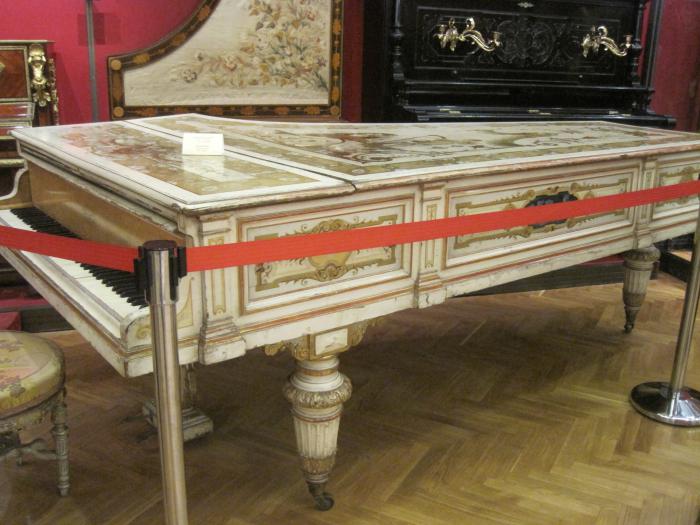 Throughout its short history, the Glinka Museum has experienced both times of growth and difficult periods when it, being in complete oblivion, was on the verge of closure. For almost three decades, he played the role of a service department at the capital's conservatory. These were the functions of a kind of educational library, since the employees were mainly involved only in storage and to a very small extent in the acquisition of new exhibits.
Throughout its short history, the Glinka Museum has experienced both times of growth and difficult periods when it, being in complete oblivion, was on the verge of closure. For almost three decades, he played the role of a service department at the capital's conservatory. These were the functions of a kind of educational library, since the employees were mainly involved only in storage and to a very small extent in the acquisition of new exhibits.
At the end of the thirties of the last century, on the eve of the celebration of the 75th anniversary of the Moscow Conservatory, the nature of the museum’s activities changed dramatically. Its collection began to grow at a rapid pace, the exhibition area of work noticeably intensified, and the research side of the collections was popularized.
In 1941, on the basis of the conservatory division, by decision of Stalin, the Central Museum of Musical Culture was created. And already in 1943 it was given the status of a state institution. From that moment on, GCMMK not only began to gain great popularity, but also received its own special place. 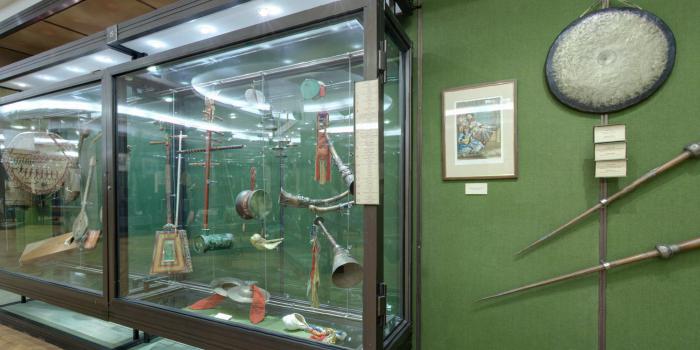
It was then, in the mid-forties, that for some reason Rubinstein’s name disappeared from the official name of the museum. And already in 1954, on the anniversary of M.I. Glinka, he was given the name of the great composer.
Confession
Gradually, year after year, both the structure and direction of work began to take shape. The works published by the Glinka Museum were widely disseminated and entered into general cultural use. Thanks to source studies, this cultural center began to acquire the status of a research center. However, the Glinka Museum officially received it only in 1974. But despite the fact that this happened with some delay, nothing could stop the employees dedicated to their favorite work from engaging in scientific activities.
Throughout its history, the Glinka Museum in Moscow has changed its address twice. After the territory of the conservatory, for almost two decades it was located in a beautiful old mansion - in the chambers that belonged to the Troekurov boyars. This building was located in Georgievsky Lane: native Muscovites knew it well. But since the beginning of the 1980s, the Museum of Musical Culture named after. Glinka finally acquired his final home: a building was built specifically for him on Fadeev Street. 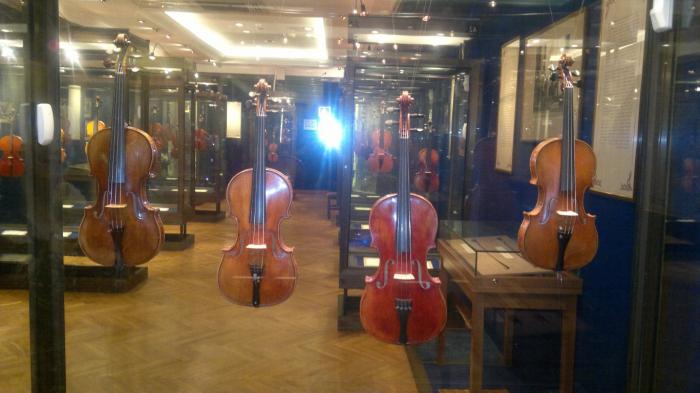
Collection of records
It is currently called one of the world's largest music culture foundations. Its collections number about one million items, which cover all components of musical culture. Here you can see not only the author's manuscripts, but also autographs and photographs depicting the most famous cultural figures.
The Glinka Museum has a huge collection of musical instruments from various eras, as well as audio and video recordings of works of all genres and types, ranging from classical, including modern, and folk.
The very first Russian gramophone records are also located here. There are about sixty thousand storage units. The first releases of the companies “Gramophone” and “Zonofon”, “Pathe” and “Metropol” are also shown. There are many publications from the Soviet period, which were produced by the Melodiya company, as well as by leading foreign musical organizations.
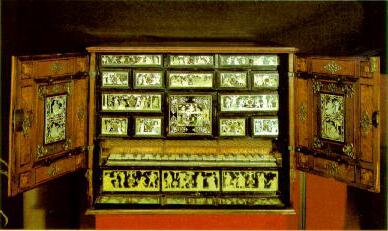 The Glinka Museum on Fadeeva is a place where manuscripts of composers' works are stored. Among them are such masters as Glazunov, Rachmaninov, Shostakovich, Grechaninov and many others. These amazing documents are perfectly preserved. They are available for viewing, so anyone who visits the Glinka Museum can admire them.
The Glinka Museum on Fadeeva is a place where manuscripts of composers' works are stored. Among them are such masters as Glazunov, Rachmaninov, Shostakovich, Grechaninov and many others. These amazing documents are perfectly preserved. They are available for viewing, so anyone who visits the Glinka Museum can admire them.
It also has its own recording studio, which is equipped with modern equipment. Musicians of various genres come to the Museum to record their works.
Divisions
The All-Russian Museum of Musical Culture named after. Glinka, in addition to the main building located on Fadeev Street, today also includes branches. These departments are located in the center of the capital. Many of its residents - music fans - know about them. This is the memorial estate of Prokofiev, “P. Tchaikovsky and Moscow,” apartments of A. Goldenweiser and N. Golovanov, as well as the House Museum, which is still under construction. 
In 1995, by decree of the President of the Russian Federation, the Glinka Museum was included in the State Code, which includes especially valuable cultural heritage objects.
Educational work
Its researchers conduct about twenty subscription series of lectures, concerts, and educational courses for visitors of different ages and levels of knowledge. There is a separate program for the development of children - instruments with musical inserts, stories about their origin and history of creation.
Thematic exhibitions can be viewed not only by visiting the Glinka Museum on Fadeev Street or other metropolitan branches, but also in other cities of the country and abroad, where collections are constantly brought.
Employees prepare and publish music and text publications, and carry out work for the publication of musical and scientific research.
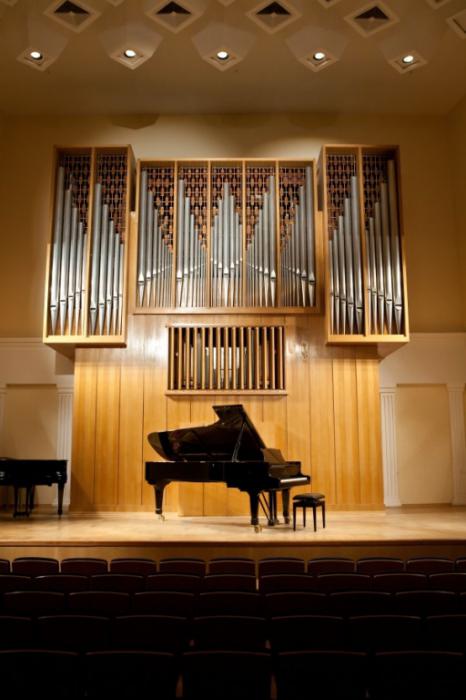 The Glinka Museum hosts not only musical concerts and exhibitions. Since 2007, the Moscow Opera Club has been operating here. At first it was opened at the Cinema Museum, then moved to the A. A. Bakhrushin Theater Hall, and since 2007 it has firmly established itself within the walls of the M. Glinka Museum. The club's programs are devoted to a very specific topic: these are biographies of composers or singers, or opera schools. As part of its activities, seminars are held in which foreign performers, musicians and musicologists take part.
The Glinka Museum hosts not only musical concerts and exhibitions. Since 2007, the Moscow Opera Club has been operating here. At first it was opened at the Cinema Museum, then moved to the A. A. Bakhrushin Theater Hall, and since 2007 it has firmly established itself within the walls of the M. Glinka Museum. The club's programs are devoted to a very specific topic: these are biographies of composers or singers, or opera schools. As part of its activities, seminars are held in which foreign performers, musicians and musicologists take part.
Main exhibitions
The Glinka Museum has a unique collection of instruments, a third of which are on display. Its five halls, decorated in individual colors, present more than nine hundred traditional and professional exhibits to visitors. Instruments of both the peoples of Russia and almost all countries of Europe, Asia, America, Africa and Australia are collected here.
In the first hall, visitors can see Russian ones. Here you can admire the unique harp, presumably made in the thirteenth and fourteenth centuries. They were found during archaeological excavations in ancient Novgorod. After the reconstruction of their lost fragments, these unique finds took their place of honor. Copies of sniffles and beeps are also presented here: fragments of them were also discovered during excavations.
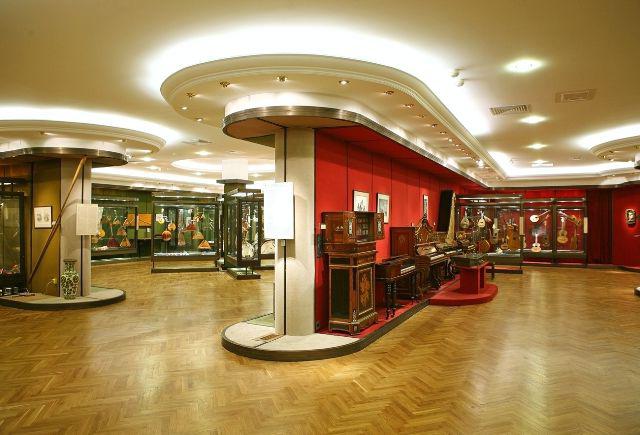 In the window of another room, which displays instruments from states neighboring our country, there is the oldest collection, of which the Music Museum is rightfully proud. Glinka. This is a collection of thirty-six musical instruments played by the peoples of Central Asia. It was collected by August Eichhorn, the bandmaster of the Turkestan Military District.
In the window of another room, which displays instruments from states neighboring our country, there is the oldest collection, of which the Music Museum is rightfully proud. Glinka. This is a collection of thirty-six musical instruments played by the peoples of Central Asia. It was collected by August Eichhorn, the bandmaster of the Turkestan Military District.
Another amazing exhibit is the Chinese small labial organ “sheng”, which, according to researchers, was created back in the second millennium BC. Other instruments - a Vietnamese monochord decorated with filigree mother-of-pearl inlay, as well as a nineteenth-century Irish harp - always arouse great interest among visitors. Here you can also see the Scottish bagpipes and the Japanese stringed “koto”, which girls from aristocratic families were supposed to be able to play, Indian “veena”, as well as African tam-tams, the membranes of which are made from animal skins.
